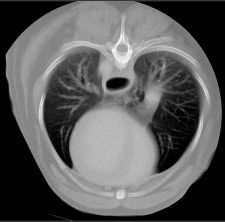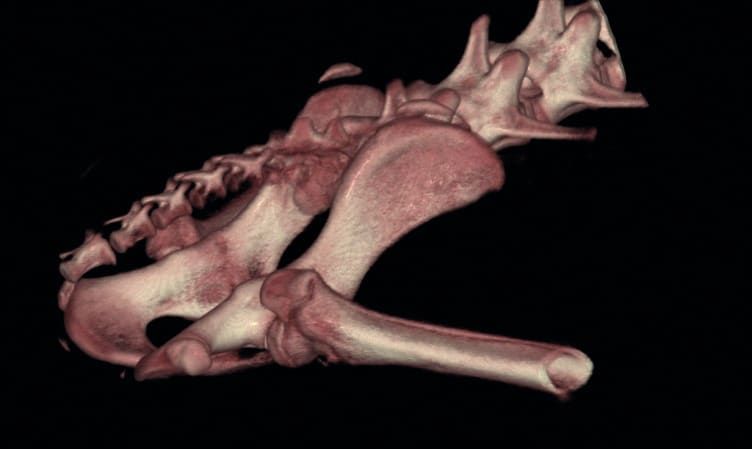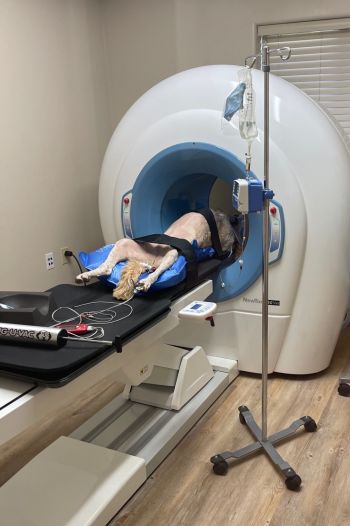CT Imaging


Our machine is a diagnostic computed tomography (CT) machine, which performs CT scans, also known as “CAT Scans.” These scans help to find and diagnose issues that may not be detectable on a standard radiograph (X-ray). The captured images can be viewed as standard “slices,” or digitally converted to a 3D model of the imaged area.
CT Scans are made on a referral basis
The CT process starts with your veterinarian. He or she will refer you to us for a CT scan and will provide the pertinent history to the problem area and will perform pre-anesthetic blood work on your pet. This is to help screen for other medical concerns that need to be addressed before your pet comes to us for a CT.
General Anesthesia is required for the scan
Since the patient must be completely still for the scan, he or she will be placed under general anesthesia. You will drop your pet off in the morning between 8:30 am-9:00 am. Your pet will need to be fasted, meaning no food after 10 pm the night before. Water is allowed until you leave your home. While the scan itself may take less than a minute, the preparation and process of anesthesia, positioning the patient, verifying that the scans are complete, and waking the patient up take much longer. Thus, your pet will be sent home that afternoon and will be a little sleepy from the anesthesia for the evening, sometimes until the following day. You will be given instructions on how to feed your pet following an anesthetic procedure, and you can read ahead about feeding here.

Receiving Results
Your pet’s CT images will be submitted electronically to a board-certified radiologist for reading. They will then produce a report of the findings, typically in 1-2 business days. Based on the radiologists’ workload, the final report may take up to 4 business days. Once the report is finalized, it will be sent to your referring veterinarian. Then, you and your vet will decide how to proceed after the findings of the CT scan. If the CT report indicates the need for a surgery, your vet may refer you to Dr. Britton Bradberry for a surgical consultation.
Expectations
It is important to remember that your pet is essentially coming to see the CT machine. While one of the veterinarians will perform a preanesthetic examination and oversee the anesthesia and scan, they will not provide any medications or treatments for your pet’s medical conditions or problems. We are a surgical and advanced imaging center only – unfortunately we are no longer a general practice, and do not provide general medical care.
Some final thoughts to consider
Your pet’s safety is our highest priority. We pride ourselves in providing the safest anesthetic drug protocols. We monitor your pet’s vital signs and adjust anesthesia appropriately during every procedure to ensure the safest experience possible. However, many patients who come for a CT scan are sick, have suspected cancer, or have undiagnosed medical problems. Many of the patients are older and may have age-related medical issues. Thus, these patients are generally at higher risk for anesthetic or post-anesthetic complications. Some patients experience nausea, vomiting, refuse to eat, or can be very weak after the procedure. The length of the anesthesia is similar to a sedated exam or a neuter, however, these sick patients experience the process very differently. It is very important that you consider, understand, and discuss such risks before the procedure. Many owners consider the risk-to-benefit ratio acceptable because they are determined to find answers – answers that cannot be found through other diagnostics. Please be sure to discuss any concerns with the veterinarian before the procedure. We want to be sure you are comfortable with the process before we proceed.